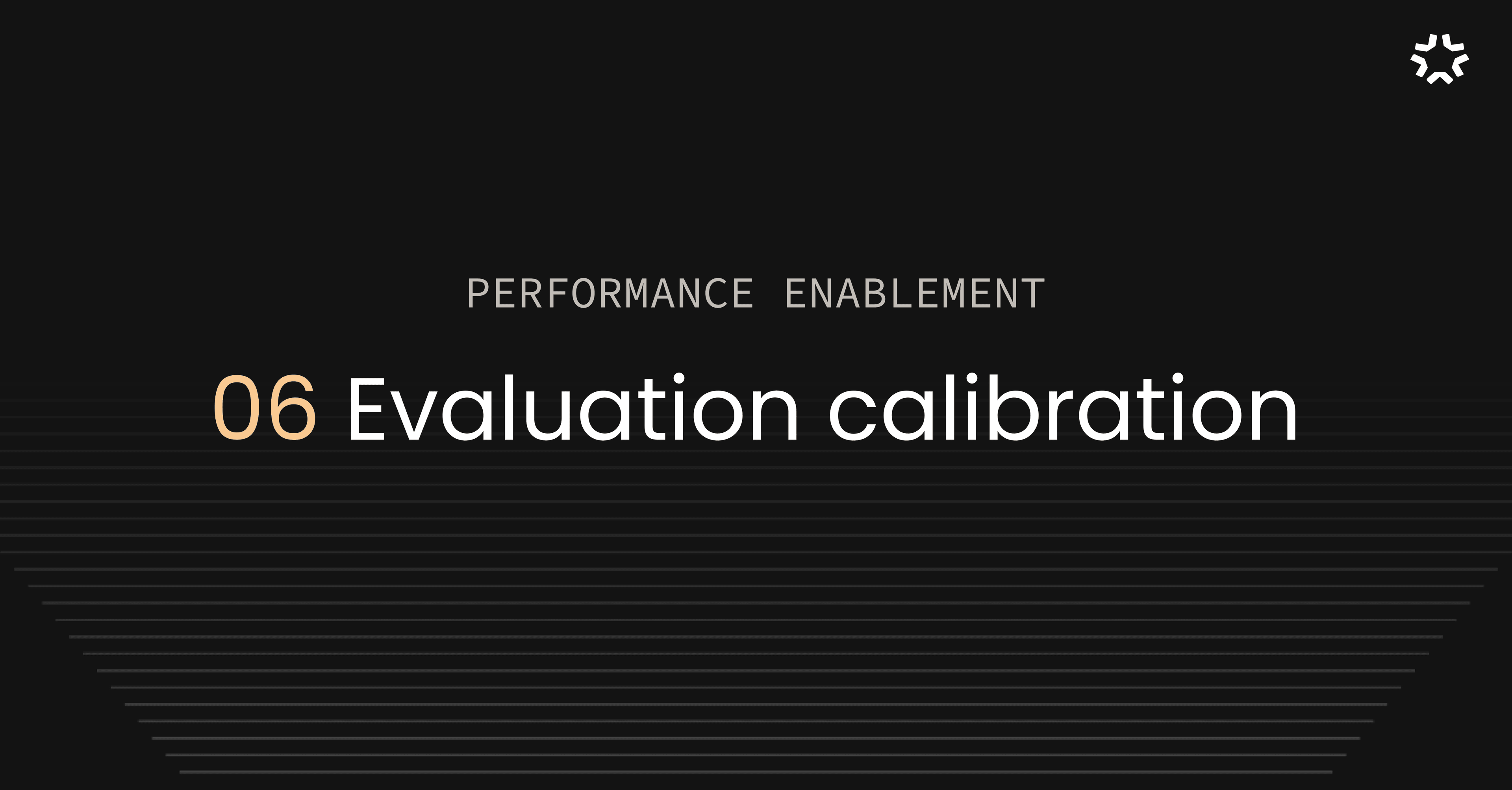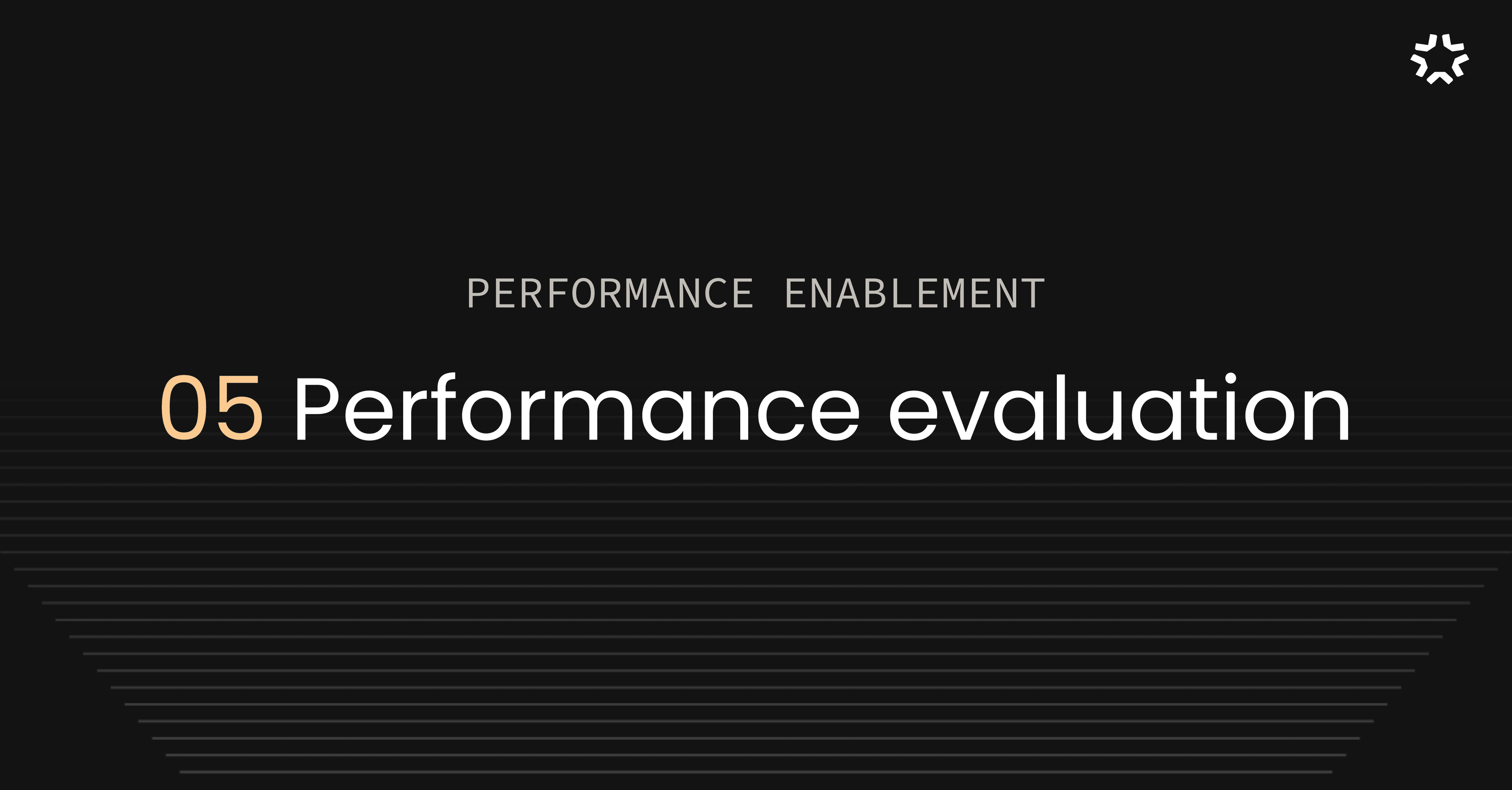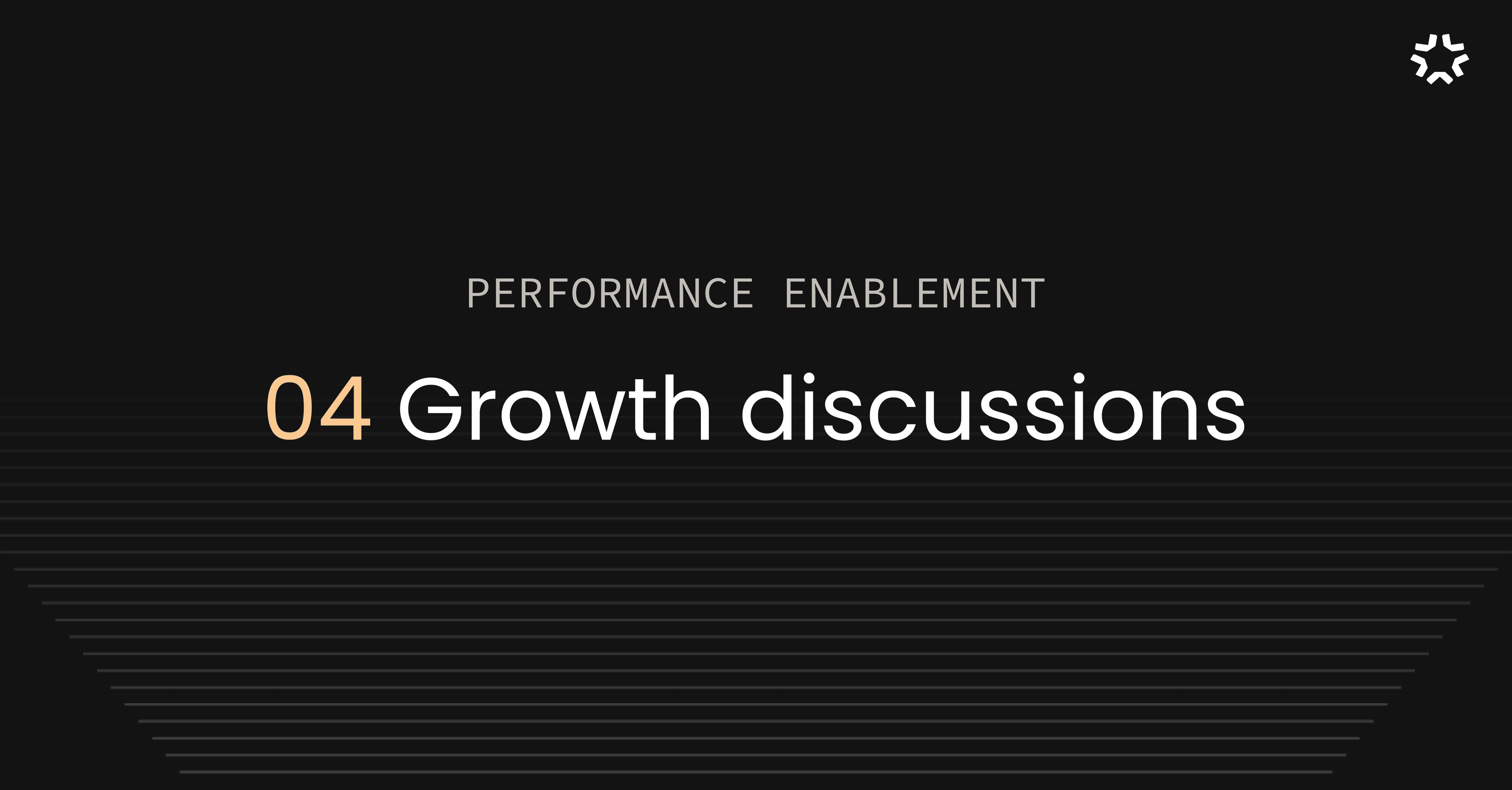What is performance enablement and how does it differ from traditional performance management?
A guide to why companies are moving from fixed performance review cycles towards continuous, growth-focused performance enablement.
Performance enablement is a modern approach to employee development that goes beyond annual reviews and backward-looking evaluations. It equips employees and managers with clear goals, feedback, and coaching in a proactive system that supports continuous growth. By shifting from evaluation to enablement, organizations build a culture of support and accountability that drives both individual and business results.
In this article, we’ll cover:
•What performance enablement means in practice
•How it differs from traditional performance management
•The main challenges of the old model
•Why companies are moving towards continuous enablement
•The six key elements of an effective performance enablement system
What is performance management and how it differs from performance enablement
Traditional performance management is how organizations align individual performance with company goals by setting expectations, giving feedback, measuring outcomes, and supporting development. It has largely centered on annual or semi-annual reviews that evaluate past contributions, set future goals, and guide decisions on compensation and promotions.
Deloitte (2025) highlights how ineffective and mistrusted traditional performance management remains: only 2% of CHROs believe their systems work, while 61% of managers and 72% of workers say they don’t trust the process. Fewer than one in three workers view reviews as fair, and just 6% of organizations report effectively using data to both measure performance and build trust.
According to Mercer Talent Management Survey (2025), 60% of HR Leaders believe that performance management does not work the way they wish it would, within their organization.
Modern performance enablement takes a forward-looking approach, built on clear expectations, continuous feedback, and employee-driven growth. From our interviews with nearly 200 people leaders, team leads, and founders, one theme is clear: companies are moving to enablement because it drives engagement, agility, and results. This blog unpacks that shift and offers practical steps to put performance enablement into practice.
What are the challenges of traditional performance management
As organizations grow and roles evolve, the once-a-year approach of traditional performance management can fall short. Employees need clarity on what’s expected of them—not just during review cycles, but continuously. That’s why many companies are now shifting toward more dynamic, ongoing systems that combine evaluation with growth-focused development and real-time feedback.
Here's what we've learned about the common challenges of performance management from our interviews.

Here are the biggest challenges we uncovered in more detail:
- Fails to drive performance: Traditional performance management systems, like annual reviews and forced rankings, can be counterproductive. Instead of improving performance, they create stress, reduce engagement, and focus on past mistakes rather than future growth.
- Performance vs. development conflict: Employees often perceive feedback as being tied only to promotions or compensation, rather than as a tool for personal and professional growth.
- Delayed Feedback: Annual or semi-annual reviews often mean that feedback arrives too late to be useful. Employees are left without timely insights that could help them improve in real time.
- Biased Feedback: Performance reviews often suffer from recency and positivity bias. People prioritize recent events and give overly positive feedback when it impacts colleagues' evaluations, often neglecting constructive input.
- Manager-driven, not employee-centric: Traditional models place the burden of performance evaluation on managers rather than empowering employees to take charge of their own growth. This strains managers' time while limiting individual development.
- One-size-fits-all approach: Many organizations use rigid evaluation systems that fail to account for individual career paths, team dynamics, and evolving business priorities.
"The lack of value contributed by the usual performance evaluation and review process is the reason why so many organizations are postponing or even completely discontinuing performance evaluations."
How to move from performance management towards modern performance enablement
Performance management is evolving into something more continuous, employee-driven, and dynamic; what we call Performance Enablement. This shift seems to be especially crucial for growing tech organizations that operate at a fast pace and require a model that fits their operational cadence.
Performance Enablement ensures fair reviews, but also provides individuals with meaningful feedback that supports their development and growth every week, instead of on a bi-annual basis.
According to Mercer (2025), 32% of companies are considering an AI-enabled continuous feedback process in 2025.
| Aspect | Performance Management | Performance Enablement |
|---|---|---|
| Focus | Looks at past performance | Encourages continuous improvement |
| Feedback | Infrequent, annual/semi-annual, off-context | Ongoing, real-time, in-context |
| Ownership | Manager-driven | Employee-driven, with support from Managers |
| Decision-making | Based on recent events | Uses continuous insights |
Performance management & performance enablement: key differences
Business science seems to support this shift as well, as Harvard Business Review (2016) noted that 70% of multinational companies are moving toward a performance model that focuses on people development, not evaluations.
How to implement performance enablement in practise
From our discussions, we identified six key elements of an effective performance enablement process. Here’s a quick overview of each element - all of which we’re looking to cover in detail in future writing.
01 Set clear expectations
Why it matters: People need to know what good performance looks like. How to do it: Define key behaviors, skills, and impact metrics for each role. Use simple templates for consistency. Outcome: Clarity and alignment between individual contributions and company goals. Suggested cadence: Onboarding, role changes, quarterly
02 Build a culture of continuous feedback
Why it matters: Timely feedback helps employees grow in real time. How to do it: Tie feedback to key milestones (onboarding, project completion, meetings). Train teams to give meaningful, timely feedback. Outcome: Eliminates bottlenecks caused by delayed reviews. Suggested cadence: Ongoing
03 Have regular 1:1 check-ins
Why it matters: Employees need structured support and alignment. How to do it: Keep 1:1s employee-driven, focusing on priorities, feedback, and growth. Use templates to track discussions. Outcome: Builds trust and keeps everyone aligned. Suggested cadence: Weekly or biweekly
04 Prioritize career growth discussions
Why it matters: People stay when they see a future in the company. How to do it: Replace one regular 1:1 with a quarterly career conversation. Use accumulated feedback to guide discussions. Outcome: Helps employees plan long-term growth and stay engaged. Suggested cadence: Quarterly from start date
05 Evaluate performance continuously
Why it matters: Ongoing assessments reduce bias and improve decision-making. How to do it: Blend qualitative feedback with structured evaluations. Use consistent prompts to measure skills, behaviors, and impact. Outcome: Informed talent decisions and fewer surprises. Suggested cadence: Quarterly
06 Separate compensation from feedback
Why it matters: Employees should feel safe receiving feedback without worrying about pay decisions. How to do it: Keep compensation reviews separate from performance conversations. Use structured data for fair decisions. Outcome: Greater trust in the system and fairer rewards. Suggested cadence: Annual
How does Taito.ai support continuous performance enablement
Taito.ai transforms your performance management into continuous enablement: automating expectations, feedback, coaching, and fair evaluations. Every interaction is personalized and aligned with your company’s values, goals, and expectations.
Interested to se how it works in practise? Explore our plans and try Taito.ai in your team today. Get started below.
Get started
Frequently asked questions about performance enablement
What’s the main difference between performance management and enablement?
Performance management looks backward at past performance, while enablement focuses on continuous growth and support in real time.
Why are companies moving away from traditional reviews?
Because annual, top-down reviews are slow, biased, and demotivating, failing to actually improve performance.
What does performance enablement look like in practice?
It combines clear expectations, continuous feedback, regular 1:1s, and growth discussions into a lightweight, ongoing process.
How does enablement benefit fast-growing companies?
It creates alignment, agility, and employee engagement without the heavy bureaucracy of old review systems.
What to read next
This is our first blog about performance enablement, and how to implement it in your team. We’ll be writing deep dives into each of these topics, sharing practical steps on how to implement them in your team.

What is performance evaluation calibration and why does it matter?
September 8, 2025

Employee performance evaluations: from reviews to enablement
August 27, 2025

Growth Discussions: Turning insight into long-term employee growth
August 14, 2025
Coaching & 1-1 Meetings: The third element of Performance Enablement
June 24, 2025
Continuous feedback: The second pillar of Performance Enablement
May 14, 2025
Setting Expectations: The first step to successful Performance Enablement
April 4, 2025